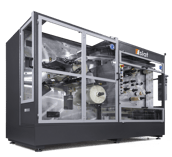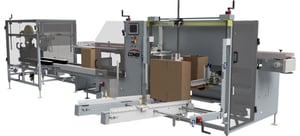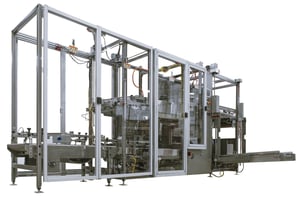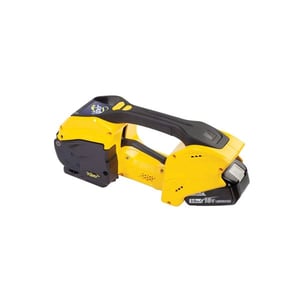There are some big reasons to consider adding robotic packaging equipment to your end-of-line packaging operations. Whether being used to replace manual labor or some other automation, an industrial robot can provide long-term cost savings through:
- Increased productivity: Robots can work faster than humans and they don’t need breaks.
- Flexibility: They can be programmed for multiple routines to shorten changeovers and adapt to a range of jobs.
- Improved safety: Robots don’t suffer strains and repetitive motion injuries, and they don’t lose focus because they’re tired.
- Reduced turnover in undesirable jobs: In an environment of labor shortages, robots can do jobs that are difficult to fill and keep filled.
For many operations, those reasons are enough to justify a serious look at robotics. But in case you need one more, consider sustainability.
Sustainability isn’t just a feel-good mission anymore.
Back in 2005, Walmart told 1.6 million employees and 60,000-plus suppliers that its new sustainability strategy was vital to remaining competitive in the future.
In a more recent survey by the National Association of Manufacturers, 58 percent of respondents said that assessment applied to their own businesses, while 68 percent said their companies have implemented extensive, corporate-wide sustainability strategies.
Here’s how robots support sustainability:
Reduced use of packing consumables
Robots can be programmed to optimize the use of packing materials and reduce waste. The most obvious example is tape to seal cases. When people apply tape manually, they almost always use more than necessary. The faster the throughput, the less accurate they’re likely to be. Over the course of a year, it adds up. A robot will always use the precise amount of tape specified, and place it exactly where required.
Can you save enough on tape to offset the cost of the robot itself? Perhaps—in a high-volume operation. If your company is still using manual labor to seal cases, it’s not likely. But there are other benefits to the reduction in consumables that robots provide.
Boxes that are sealed robotically hold together better and they look better.
“You can see it instantly,” remarks Fred May, BSME, senior regional sales manager who has served Combi Packaging Systems in a variety of roles over the past 30 years.
“If you’re making boxes by hand, it's very difficult to train your operators not to put two, three, four pieces of tape on that box. You’ll see lots and lots of wraps of tape. Contrast that to the boxes you receive from Amazon or Chewy. The tape is straight, it’s just the right length. Every time.”
Adaptability
Robots can be programmed to quickly adapt to different packaging sizes and materials, enabling the use of sustainable and recyclable packaging options that might not work with other types of automation.
Better shipping
The precision that robots provide when palletizing and stabilizing loads can reduce damage during transit. It also supports load optimization—meaning more product per container and fewer total trips. That reduces emissions and may even take some pressure off transportation budgets.
Energy efficiency
There is no simple or universal answer to the question whether robotics will reduce energy consumption in your business.
Depending on size, function and programming, robots can be energy hogs. But when robots are well-matched to the work they do and skillfully programmed to minimize wasted motion, they may provide a net reduction in energy costs.
Robotics also lends itself to high-tech solutions to reduce energy use—things like sleep mode, energy recovery and programmed routines to eliminate wasted motion. Robotics also lends itself to high-tech solutions to reduce energy use—things like sleep mode, energy recovery and programmed routines to eliminate wasted motion.
Packaging data collection
Robotic systems can collect valuable data on the packing process, which can support optimization efforts.
At Combi, we know there are circumstances when a robot isn’t going to be the best solution for your end-of-line packaging needs. And in all the robotic installations we’ve done, nobody has ever told us that sustainability was the deciding factor. But if you ever consider a robotic solution, it may be nice to know how it fits into a meaningful sustainability strategy.
Are you looking for help understanding where robotics might fit into your end-of-line packaging operation? Contact Combi Packaging Systems for an honest assessment of the most appropriate approach for your needs.

.png?width=172&name=End%20of%20Year%20Sale%20Equip%20Drop%20Down%20(172%20x%20157%20px).png)






.png?width=161&name=ProWrap%20(1).png)


